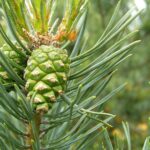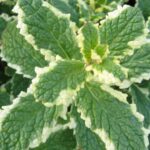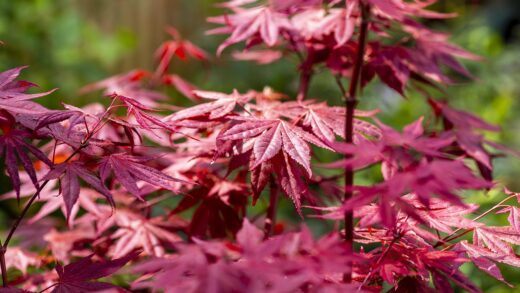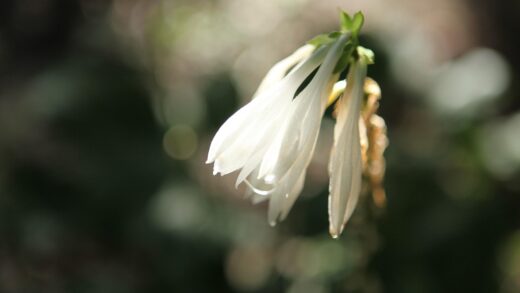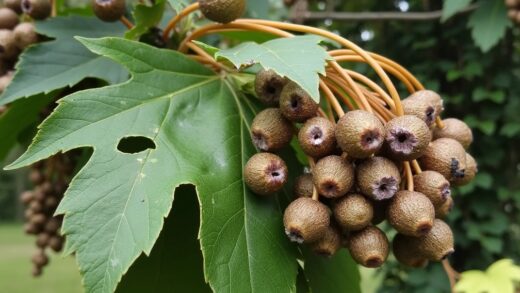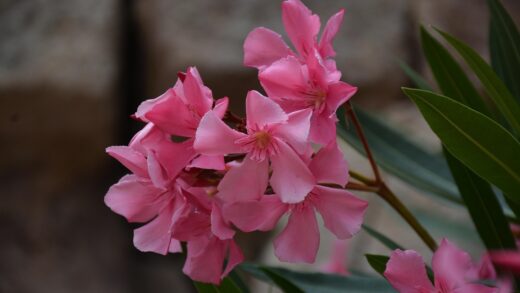To cultivate a truly healthy and vibrant Daphne laureola, it is imperative to understand and respect its specific light requirements, which are deeply ingrained from its evolution as a woodland understory plant. This is not a shrub that basks in the glory of the full sun; rather, it thrives in the gentle, cool, and protective embrace of shade. The ideal location for a spurge laurel is one that receives dappled sunlight filtering through a high tree canopy or one that gets a few hours of soft morning sun followed by shade for the remainder of the day. Providing these light conditions is the most fundamental step towards ensuring the plant’s long-term health and success in a garden setting.
The deep, glossy green of a healthy spurge laurel’s leaves is a direct indicator of its preference for lower light levels. The pigments in the leaves are optimized to perform photosynthesis efficiently in shady conditions. When this plant is exposed to too much direct, intense sunlight, especially the harsh rays of the afternoon sun, the foliage is unable to cope. The result is a condition known as leaf scorch, where the leaves develop brown, crispy patches and edges, and the overall colour can become a washed-out, sickly yellow-green. This is a clear sign that the plant is under significant stress.
Conversely, while spurge laurel is highly tolerant of deep shade, this is not necessarily its ideal condition for optimal performance. In a location with very heavy, year-round shade, such as under dense evergreen trees or in a narrow space between buildings, the plant will certainly survive. However, its growth may become more open and leggy as it stretches towards any available light source. Furthermore, flowering may be significantly reduced in very deep shade, as the plant may not receive enough light energy to invest in producing its subtle yet fragrant blossoms.
The perfect balance, therefore, is partial shade. This provides enough light for robust, yet compact, growth and encourages a good display of flowers, while simultaneously protecting the plant from the damaging effects of excessive sun exposure. A location on the north or east-facing side of a house is often perfect, as these aspects are naturally shielded from the most intense sun of the day. Careful observation of your garden’s light patterns throughout the day and seasons is the key to identifying the perfect microclimate where this elegant woodland shrub will feel most at home.
Its native woodland habitat
The light requirements of Daphne laureola are best understood by examining its natural environment. It is a quintessential woodland plant, typically found growing in the understory of deciduous or mixed forests across Europe. In this setting, it is part of a layered ecosystem. High above, the canopies of large trees like oak, beech, and ash form the primary layer, which intercepts the majority of the direct sunlight, especially during the summer months when the trees are in full leaf.
This overhead canopy creates a microclimate on the forest floor that is characterized by dappled, shifting light and cool, moist conditions. The light that reaches the spurge laurel is filtered and indirect, creating a bright but shaded environment. This is the quality of light that the plant is perfectly adapted to. It is able to photosynthesize efficiently without the risk of its leaves overheating or losing too much water, which would happen in an open, exposed location.
The seasonal changes in a deciduous woodland also play a crucial role. In the late winter and early spring, before the canopy trees leaf out, more light reaches the forest floor. Daphne laureola takes advantage of this brighter period to produce its flowers and begin its new flush of growth. This early flowering strategy allows it to attract pollinators before the canopy becomes too dense. By the time the full heat of summer arrives, the newly unfurled leaves of the canopy provide a protective shield, creating the deep shade needed during the hottest part of the year.
By understanding this relationship between the plant and its woodland home, gardeners can make much better decisions about where to place it in their own gardens. The goal should always be to replicate this shady, protected environment. Planting it beneath high-branched deciduous trees, in the shade cast by a building, or among other shrubs that can provide some cover will create the conditions it needs to thrive, ensuring its foliage remains a deep, healthy green all year round.
The ideal balance of sun and shade
Achieving the perfect balance of light for Daphne laureola is the key to unlocking its full ornamental potential. The ideal scenario is a location that offers what is often described as ‘dappled shade’ or ‘partial shade’. This means the plant receives a mixture of sun and shade throughout the day, but is never subjected to prolonged periods of intense, direct sunlight. This could be the shifting pattern of light and shadow found beneath a mature, high-canopied tree, where the sun filters through the leaves.
An east-facing location is often considered the gold standard for plants with these requirements. In such a spot, the spurge laurel will receive several hours of the relatively gentle morning sun. This amount of direct light is beneficial, helping to warm the plant, dry off any overnight dew from the leaves, and fuel photosynthesis for the day. However, by midday, as the sun’s rays become much stronger and hotter, the location falls into the shade provided by the building or structure, protecting the plant for the rest of the afternoon.
A north-facing location can also be an excellent choice, as it will provide consistent shade for most of the day, protecting the plant from all direct sun. While this might sound like it could be too shady, these locations still receive a significant amount of bright, indirect light reflected from the sky, which is often more than sufficient for the plant to thrive. In fact, in hotter climates, a north-facing site is often preferable to an east-facing one to provide maximum protection from heat stress.
The one aspect to avoid at all costs is a south or west-facing position in an open, exposed area. These locations receive the most intense and prolonged sunlight of the day, from late morning through the late afternoon. This level of exposure is far too harsh for a woodland plant like spurge laurel. It will inevitably lead to scorched leaves, heat stress on the root system, and a rapid drying of the soil, creating a completely inhospitable environment for the shrub.
Symptoms of incorrect light exposure
The foliage of Daphne laureola serves as an excellent diagnostic tool for determining if it is receiving the correct amount of light. When the light conditions are wrong, the leaves will display clear and distinct symptoms. The most common problem is too much direct sun, which leads to a condition called leaf scorch. This manifests as brown, dry, and crispy patches on the leaves, particularly on the edges and tips. The damage is often most pronounced on the side of the plant that is most exposed to the sun.
In addition to distinct scorch marks, excessive sun exposure will also affect the overall colour of the foliage. Instead of the desirable deep, lustrous green, the leaves will take on a pale, washed-out, or yellowish appearance. This is a sign that the chlorophyll within the leaves is being damaged or destroyed by the intense light, a process known as photo-oxidation. This not only affects the plant’s appearance but also reduces its ability to photosynthesize effectively, leading to a general decline in vigour and health.
While less damaging, too little light can also produce its own set of symptoms. In a location with very deep, dense shade, the primary symptom is etiolation, or leggy growth. The plant’s stems will become elongated and weak, with greater distances between the leaf sets, as the plant stretches in search of more light. The overall form of the shrub may become sparse and open rather than compact and bushy. A lack of sufficient light is also a primary cause of poor or non-existent flowering.
A perfectly sited spurge laurel will exhibit a compact, well-branched habit with leaves that are closely spaced on the stems. The foliage will be a consistently deep, dark green with a healthy, natural gloss. It will produce its annual flush of new growth in a balanced way, and will reliably produce its fragrant flowers in the late winter or early spring. By observing these characteristics, you can be confident that you have provided the plant with the light conditions that it needs to flourish.
Choosing a location based on light
The process of selecting the final planting location for your Daphne laureola should be a deliberate and observational one. Before you even think about digging a hole, spend some time in your garden at different times of the day to map out the patterns of sun and shade. Note which areas receive morning sun, which are in shade during the hot afternoon, and which are in dappled light under trees. This initial survey is the most important part of the siting process.
Consider the long-term changes in your garden’s light patterns. A spot that is shady now might become sunny if a nearby tree needs to be removed in the future. Conversely, a sunny spot may become shadier as young, newly planted trees mature and cast more shade. Since Daphne laureola is a permanent, slow-growing shrub that strongly resents being transplanted, it is essential to choose a location that will remain suitable for many years to come. Think about the mature size of surrounding plants when making your decision.
Use existing structures and plantings to your advantage. The north and east sides of your house, a garage, or a garden wall are excellent places to start looking, as they provide reliable shade from the afternoon sun. Planting on the edge of a woodland area or under the high, filtered canopy of established deciduous trees are other classic choices that perfectly mimic the plant’s native habitat. These locations not only provide the right light levels but also offer protection from wind and create a more stable, humid microclimate.
Do not be discouraged if the ‘perfect’ spot does not immediately present itself. Many gardens have suitable microclimates in unexpected places. It could be in the shadow of a large evergreen shrub or in a corner of a border that is shaded by a fence for part of the day. The key is to match the plant’s needs to the conditions you have. By taking the time to find a location that provides protection from the harsh afternoon sun, you are laying the foundation for a healthy, beautiful spurge laurel that will be a trouble-free feature in your garden for decades.
📷: Josep Gesti, CC BY-SA 4.0, via Wikimedia Commons





